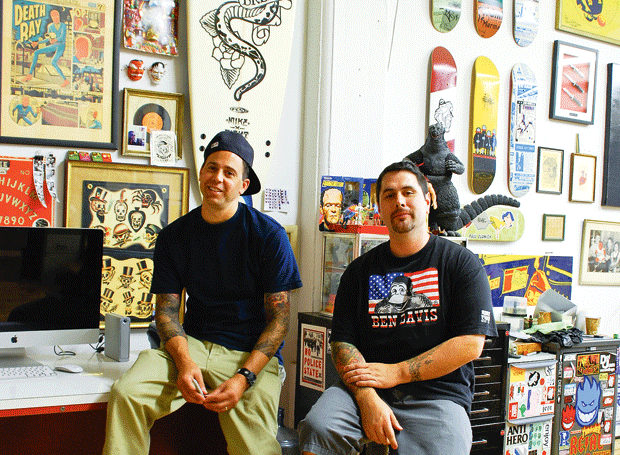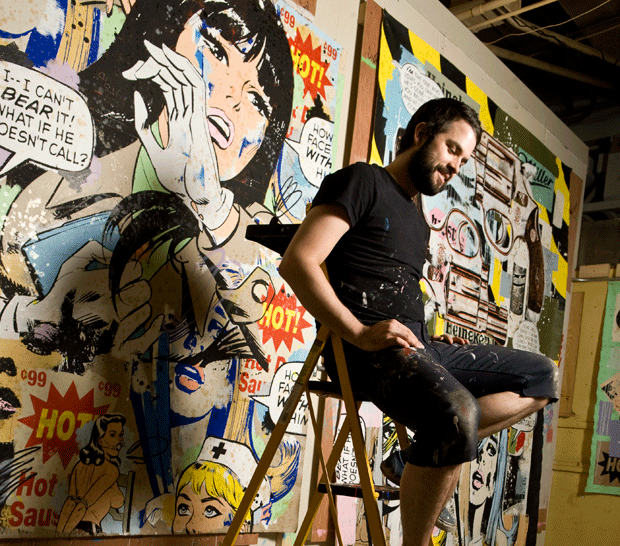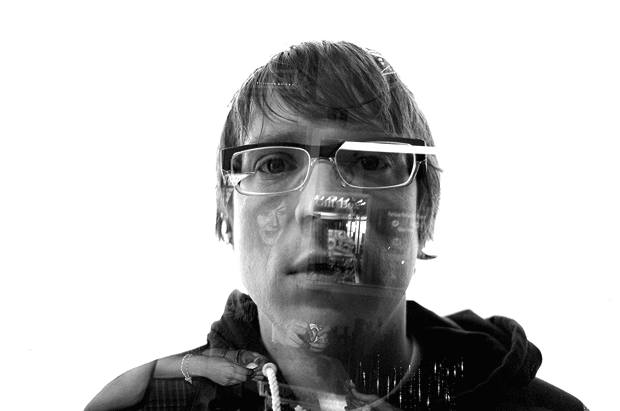Published in Whitelines Magazine Issue 94, January 11
Words: Chris Moran
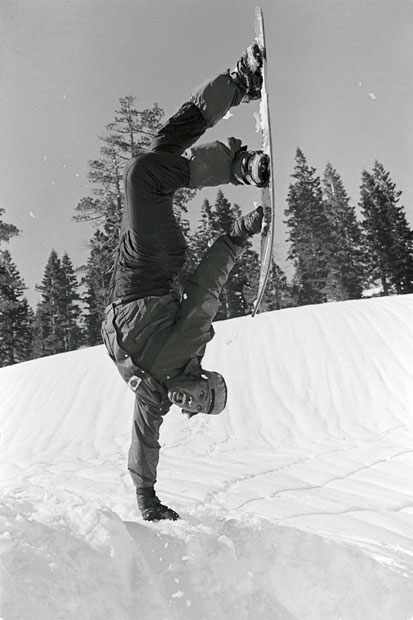
In the 1988 Sims team film SnowDaze, Terry Kidwell outlines his manifesto. “The funnest tricks are just big air,” he says. “Backside and frontside airs, just as big as you can get ‘em.” When asked what makes a good trick, team-mate Tim Windell says “a good air is anything that Terry does.” Windell was on the money: everyone loved Kidwell (or ‘TK’ as he became known) and for a certain time in the early years of snowboarding, everyone knew that he was the best there was.
To say that Kidwell is an influential figure in snowboarding is a massive understatement; the man’s list of achievements reads like a perfect CV: first ever snowboard pro model; first person to put a kick on the back of the board to ride fakie; first snowboarder to land a McTwist; first person to win the US Open pipe event.
In fact, had there been no TK, there might not have been a halfpipe event at all. No joke. In a recent interview Tom Sims admits that it was Kidwell “who inspired me to host [the first ever] halfpipe comp. He pioneered so many of the early tricks and was the reason we built a freestyle snowboard.” If there’s one stat that really stands out it’s this: of the first four world freestyle champions, Kidwell was (ahem) all of them.
Not that he was in any way competitive. In fact he was – and remains – resolutely old school about what it means to ride a board. “For me snowboarding was not just a sport,” he says now, “it was a lifestyle.” So what does he make of the modern pros who train like Olympians – who might even be Olympians – and who earn way more money than he ever did? “Today’s riders are truly amazing athletes,” he declares admiringly. “The level of the riding is much higher, but the camaraderie is still there. All the riders are just stoked to ride with each other.”
Perhaps it’s no accident that snowboarding has evolved to be a multi-billion dollar industry and yet still retains some of the lighthearted fun that marked it out at the start. After all, there’s more than a little of TK’s own laid-back DNA in there, implanted at a crucial time in snowboarding’s development. And while his list of achievements is easy to rattle off, it’s perhaps this idea – that snowboarding should, above all else, be about friendship and good times – that is his greatest legacy.
TK was too far ahead of his time. He missed the gravy train that was just about to pull into the station”
TK was fortunate to have been brought up on the shores of Lake Tahoe, California. He skated in the summer and skied in the winter and generally led an idyllic, late 60s-early 70s childhood. Legendary freerider Tom Burt went to North Tahoe High School with TK, and remembers the time well. “I was in the same class as Terry and Bob Klein,” he recalls. “Alan Armbruster was in the year above us and we were all friends; we skated together, surfed behind boats together, you know did all kinds of stuff. It was a small school so we hung out.”
By 1977, Terry, Alan and Bob had all started snowboarding. “From the first time I made a full run in the powder without falling in 1977,” says Terry, “the feeling was amazing and I believed then that the sport would be big one day.” Kidwell had a fellow believer in Tom Sims, a Californian skateboard manuafacturer who had started to branch out into snowboards. The Tahoe kids helped him refine his boards and, in effect, became the core of his snowboard team. “I had an epiphany in February of 1981,” says Sims. “I was with Terry Kidwell in Squaw Valley. I’d taken a screwdriver and [pulled] the metal edge off the skis and put it on the snowboard. I realised in one second that it was the future of the universe, and I said at the time: one day there will be half snowboarders and half skiers.”
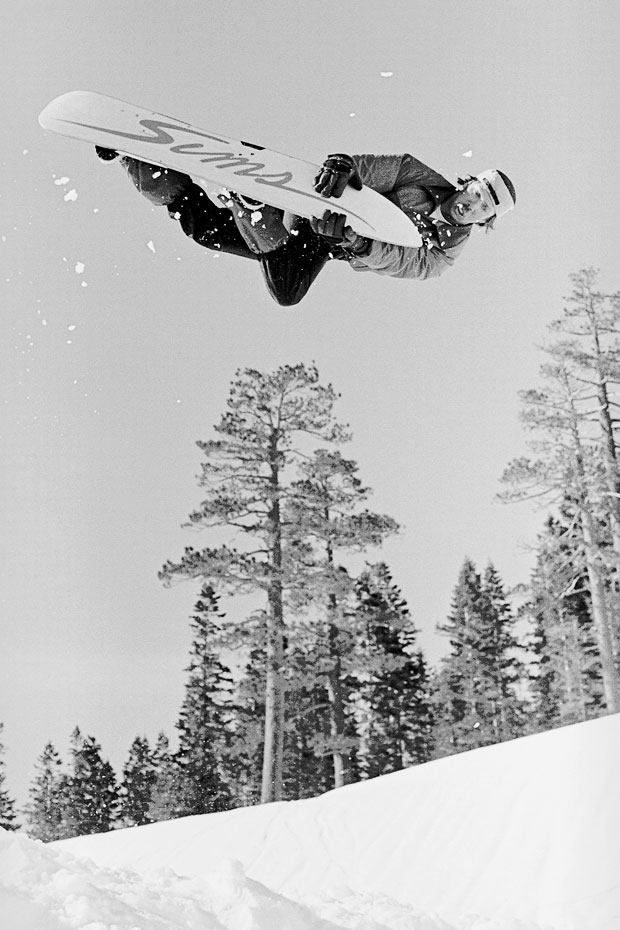
Kidwell himself thought the evolution of the bindings helped his riding the most. “It changed the way we could ride our boards in all snow conditions,” he says. “Highbacks changed the sport forever and [paved the way for] for better board innovations.” Chief amongst these was the kick tail, which TK employed on his first pro model. Suddenly the ability to ride transitions like a skateboard came into play – transitions like the famous Tahoe City Halfpipe, a sketchy precursor to today’s perfectly shaped walls of ice where TK was able to learn handplants, backside airs and McTwists, all while most of the snowboard community were still donning race suits. Naturally, when the first few freestyle contests began to take place in the mid 80’s, he was a shoe-in for the win. “It’s funny,” he recalls, “I won the first Worlds in 1984 got $150 for first place.”
But his domination wasn’t to last forever. By 1987, he had acquired a Nadal to his own Federer: Craig Kelly. “Craig took the sport to a new level of riding when the sport was really starting to get big worldwide,” he says. “Craig rode with so much style and could rip it up in any situation. He was one of the most focused riders I have ever meet. He set goals and achieved them and gets my vote for the best rider of all time. Respect, respect, respect forever.”
The two riders pushed each other, going bigger, higher, and more styled than before: Kidwell the goofy footer pulling those iconic backside airs, Kelly the regular rider doing perfect handplants. For Craig, this period would be the beginning of superstardom. For TK, it would prove to be the zenith of his career, and he cites a trip from this period as his favourite. “Going to Livigno, Italy with Craig Kelly in 1987. The powder was great and the halfpipe was one of the best to date. I won my fourth Halfpipe World Championship. And it was my first trip overseas.”
Perhaps the only tragedy of TK’s career is that, if anything, he was too far ahead of his time and didn’t garner the financial rewards his influence truly warranted. “Terry peaked too early” as Shawn Farmer puts it, and in doing so he missed the gravy train that was just about to pull into the station. TK himself is philosophical: “Never take anything for granted because things can change fast in your life. What was everything you lived for one day can become a thing of the past the next.”
But today, the Terry Kidwell renaissance is fully underway, and as the young sport of snowboarding begins to chronicle its history he is getting the recognition he deserves. In 2009 Stepchild released a new TK pro model (though as his contemporary Steve Graham points out, “In my opinion that guy deserves ten bucks for every snowboard sold!”). Still living in Tahoe, he plays in a band called Hunks of Metal with fellow legends Bob Klein and Shawn Farmer.
“Anyone who has ridden a snowboard backwards should care who Terry Kidwell is,” declares Pat Bridges, editor of US magazine Snowboarder. “Anyone who has ever ridden any pro model should care who Kidwell is. Without him, you might not have had that opportunity.”
Watch a documentary about TK at whitelines.com/kidwell-movie


